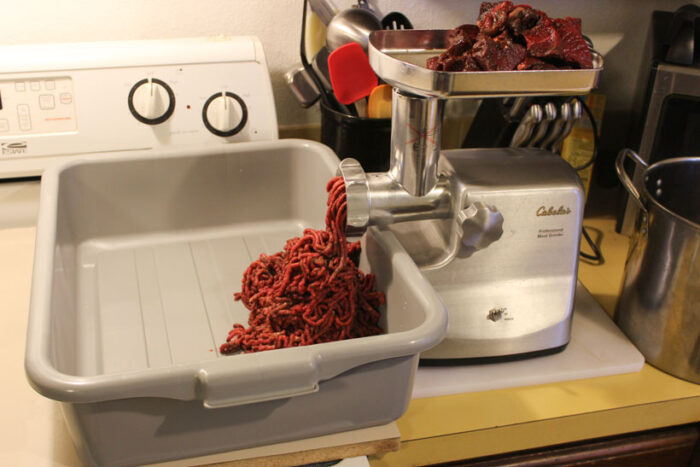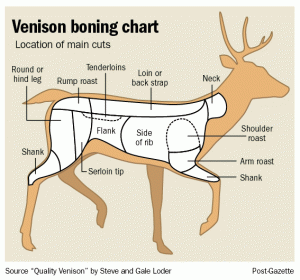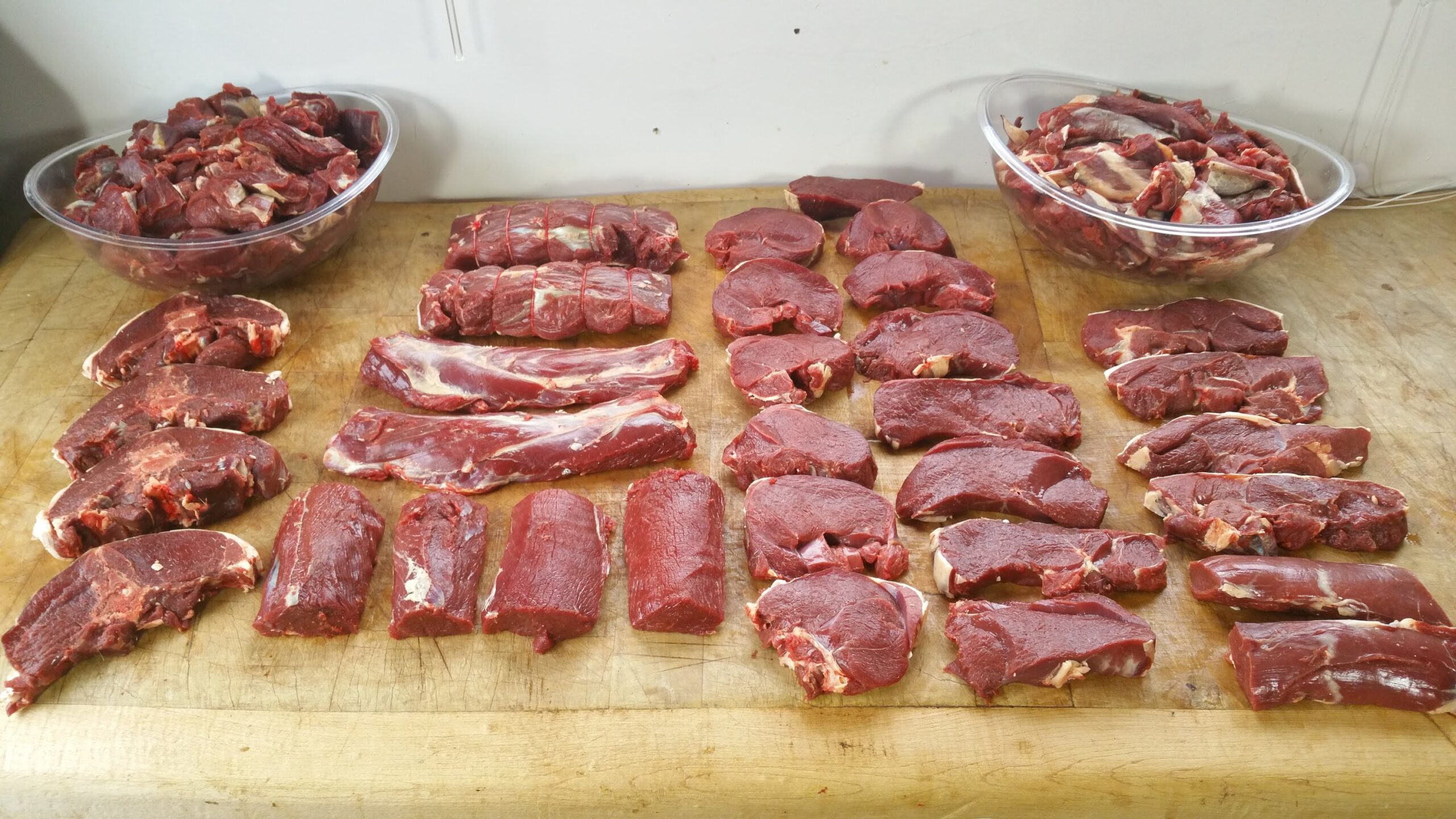 Butchering is a part of the hunt. Too many hunters miss out on making meat. It is easier to drop off their critter at the Butcher Shop or give it to a soup kitchen. The other day a guy on Facebook was asking where to take his elk to get cut up. I suggested that he learn how to do it himself and save $300. This wasn’t meant to be rude, but to encourage them to learn a new skill.
Butchering is a part of the hunt. Too many hunters miss out on making meat. It is easier to drop off their critter at the Butcher Shop or give it to a soup kitchen. The other day a guy on Facebook was asking where to take his elk to get cut up. I suggested that he learn how to do it himself and save $300. This wasn’t meant to be rude, but to encourage them to learn a new skill.
Find a Meat Mentor to teach you the process of processing meats. When you butcher with buddies, the fun of the hunt is extended. Once the tunes are playing, the beverages are flowing, and the cuts are made, everyone gets to enjoy their hunting success.
Most hunters learn by doing. Hands on is the best way to begin. Find a mentor and volunteer when hunters are butchering. You will end up with some great skills and maybe a few steaks.
Once the critter is skinned and broken down, butchering is much faster. To skin, quarter and trim the carcass takes 2 hunters maybe 2-3 hours depending on the size and where you are working. All hunters want the most tender meat, so hanging the critter for a week or two will help break down the tissues. If the outside temperatures are in the 40’s, you are as good as in a cooler box. Just cover it up to keep the unwanted visitors away.
Helpers will earn a fair share. Everyone can contribute in some way. Trimming the silver skin and fat into pieces that can be ground up takes time. Some guys are masters at this. Separating the leg meat is another skill. This creates roasts, steaks, and cubes.
 Once the meat is separated, trimmed, and broken down, wrapping is the next step. Some helpers are perfect for this. They can inspect for hair and then wrap with plastic wrap, and then freezer paper. A marker will label and date the meat. If you have a vacuum sealer, this works well too. A permanent marker will be perfect to label.
Once the meat is separated, trimmed, and broken down, wrapping is the next step. Some helpers are perfect for this. They can inspect for hair and then wrap with plastic wrap, and then freezer paper. A marker will label and date the meat. If you have a vacuum sealer, this works well too. A permanent marker will be perfect to label.
Once the meat is wrapped and ready for the freezer, lay the meat out so it will freeze quickly. If you stack the packages, the meat will insulate itself and take longer to freeze.
Grinding the trimmings is also an important job. It’s best to do at least a double grind. First grind the meat, now add the fat. You can use beef suet, pork shoulder, or bacon. The pork adds texture, flavor, and helps bind the meat together. Remember that if you start with 20 lbs. of game meat, the add in will increase the total amount.
If you plan to share some meat as a gift, include some recipes.
Eat Meat!



